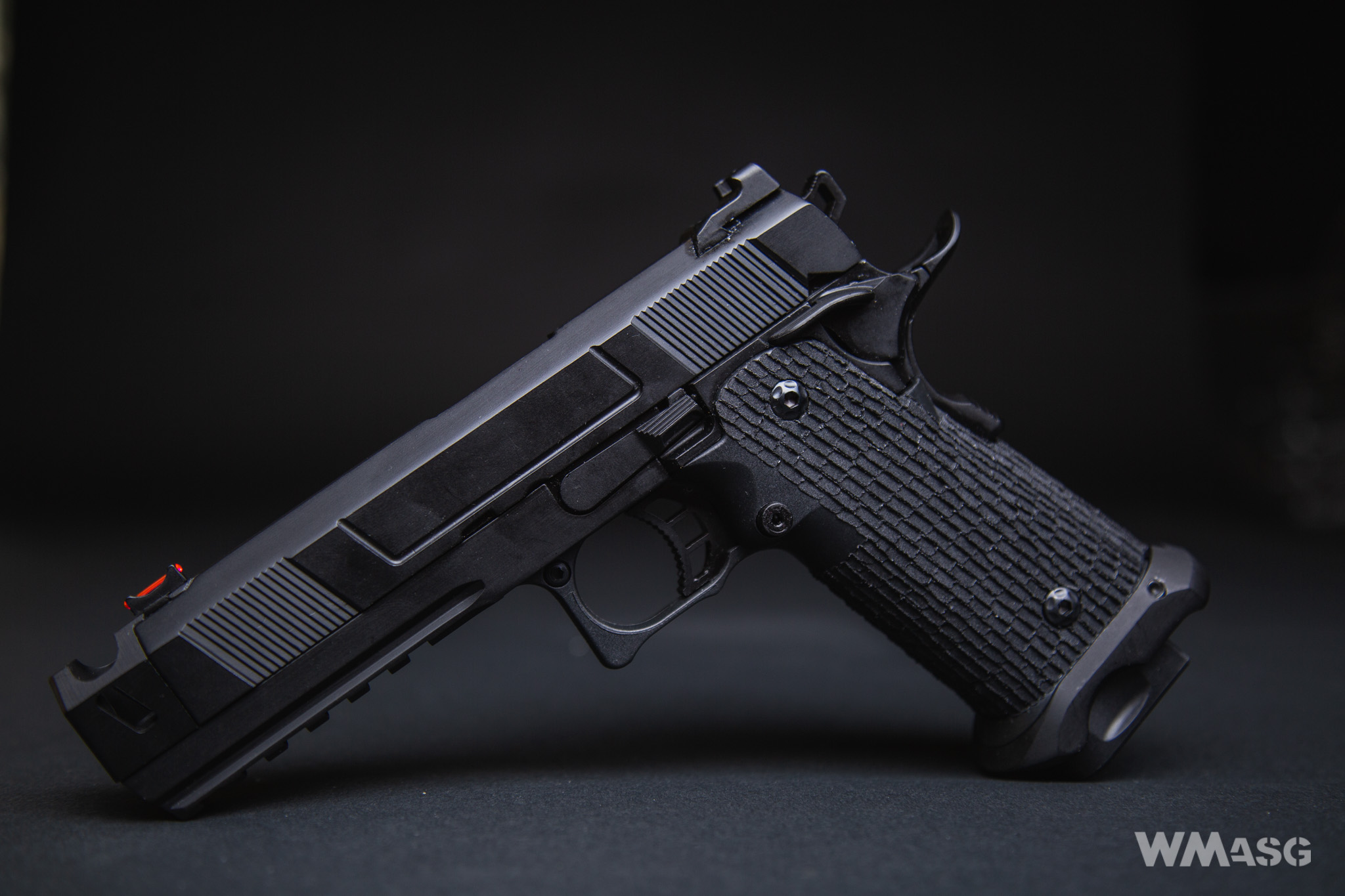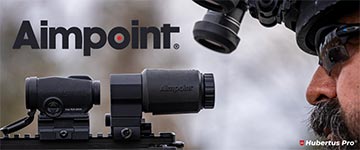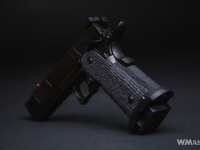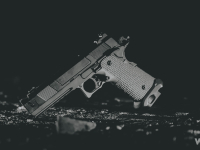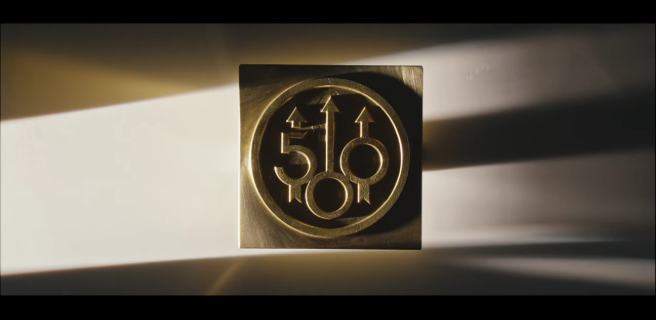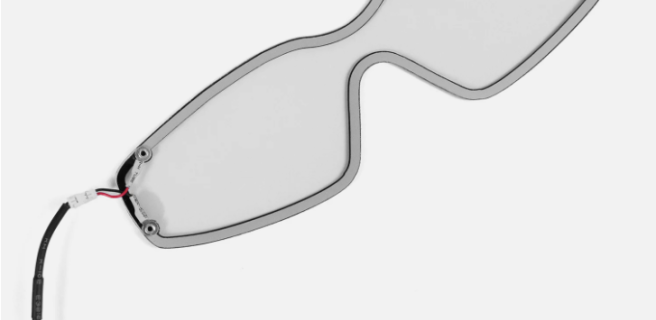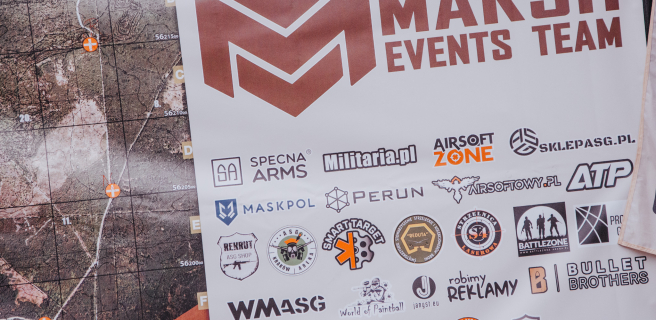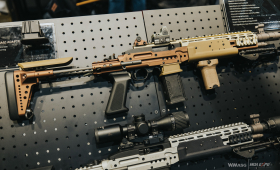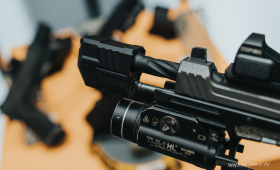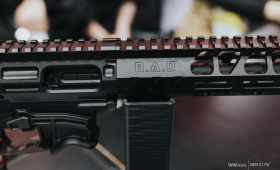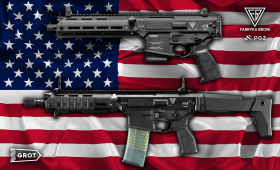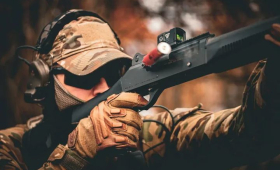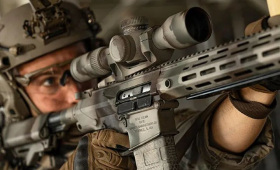The R501 is the second replica in the new Army Armament pistol series that sets a completely new quality standard in both appearance and operation. The first was the R601 pistol, a licensed replica of the Taran Tactical Combat Master pistol, John Wick's favorite movie weapon in the third part of the series. This is a custom weapon based on the Colt 2011 STI design, that is a development of the classic Colt 1911 with a double stack magazine. These types of pistols are commonly called Hi-Capa.
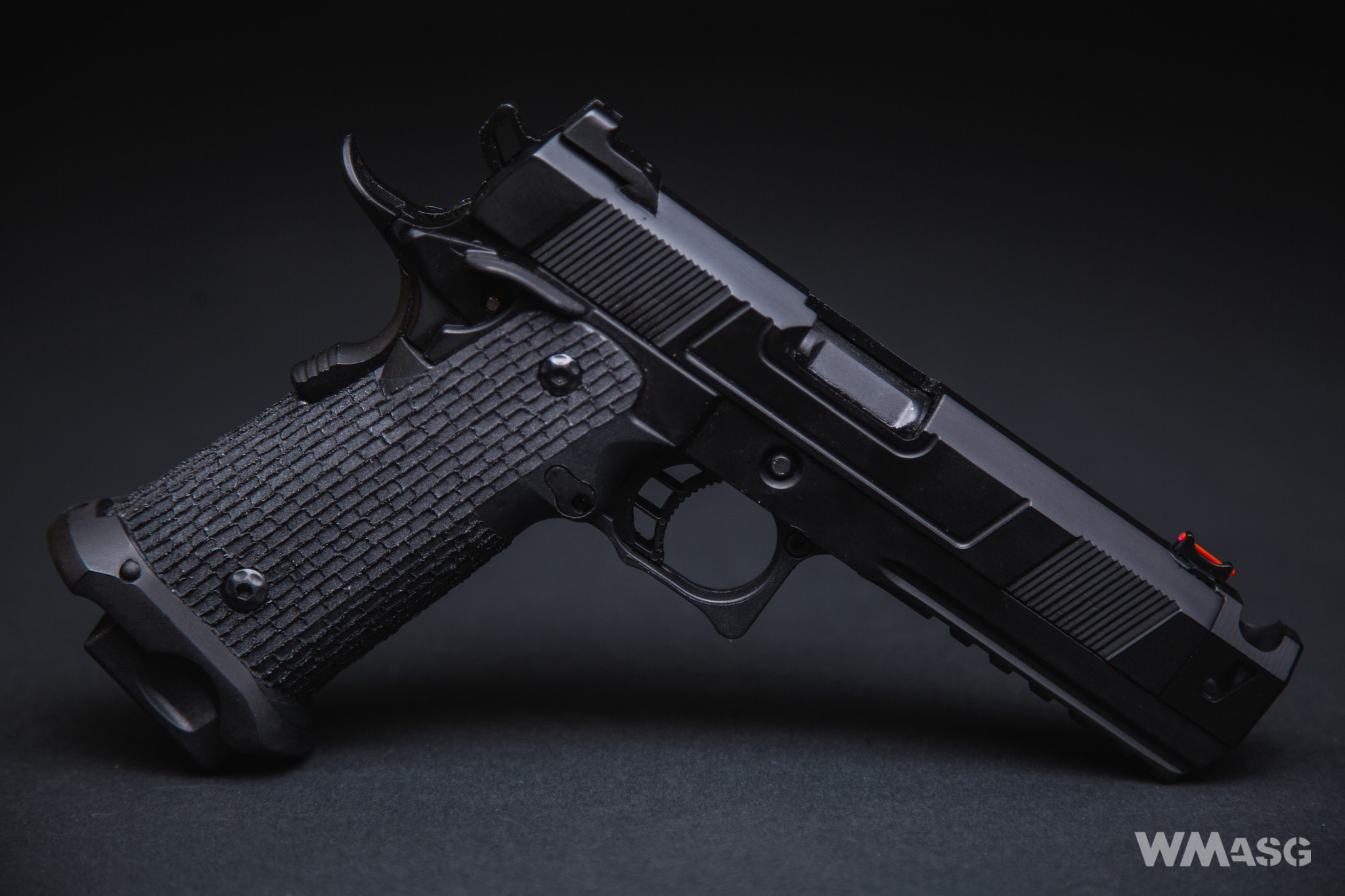
The new R501 is, and you won't find a word about it anywhere, a faithful replica of another Colt 2011 STI pistol, the Costa Carry Comp. Chris Costa needs no special introduction. This is one of the celebrities of the modern shooters world. A man with extensive experience, associated with, among other things, Magpul Dynamics. Currently, he runs the Costa Ludus company. A few years ago, exactly in 2016, he trained officers of the 3rd Division of the CBŚP Board in Poland.
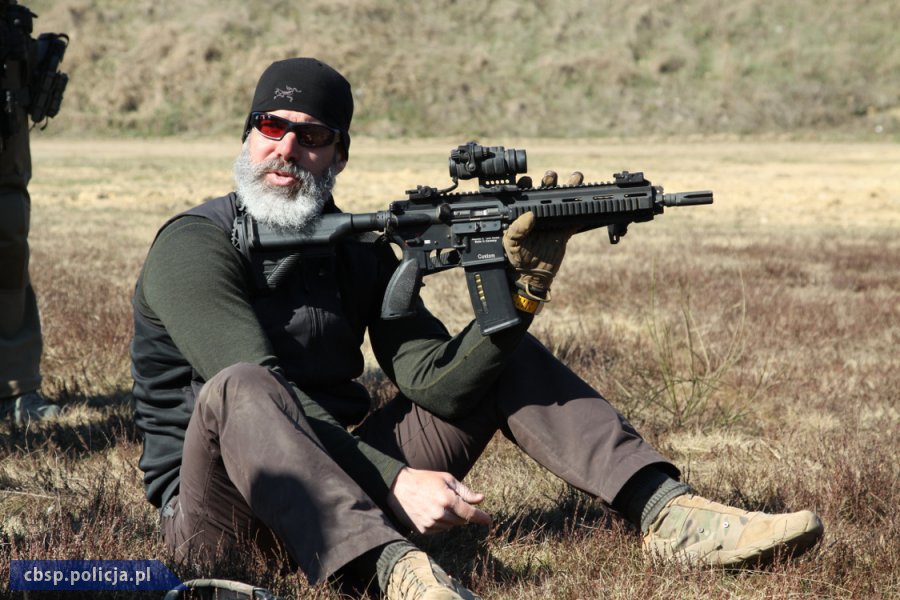
Both new Army Armament pistols, the five-inch R601 and the four-inch R501 we tested, are replicas of custom Colt STIs. So Army, a bit like Tokyo Marui, made two versions of Hi-Capa: a long and a short one. Below is the R601 (the STI Taran Tactical Combat Master), John Wick's weapon from the third movie.
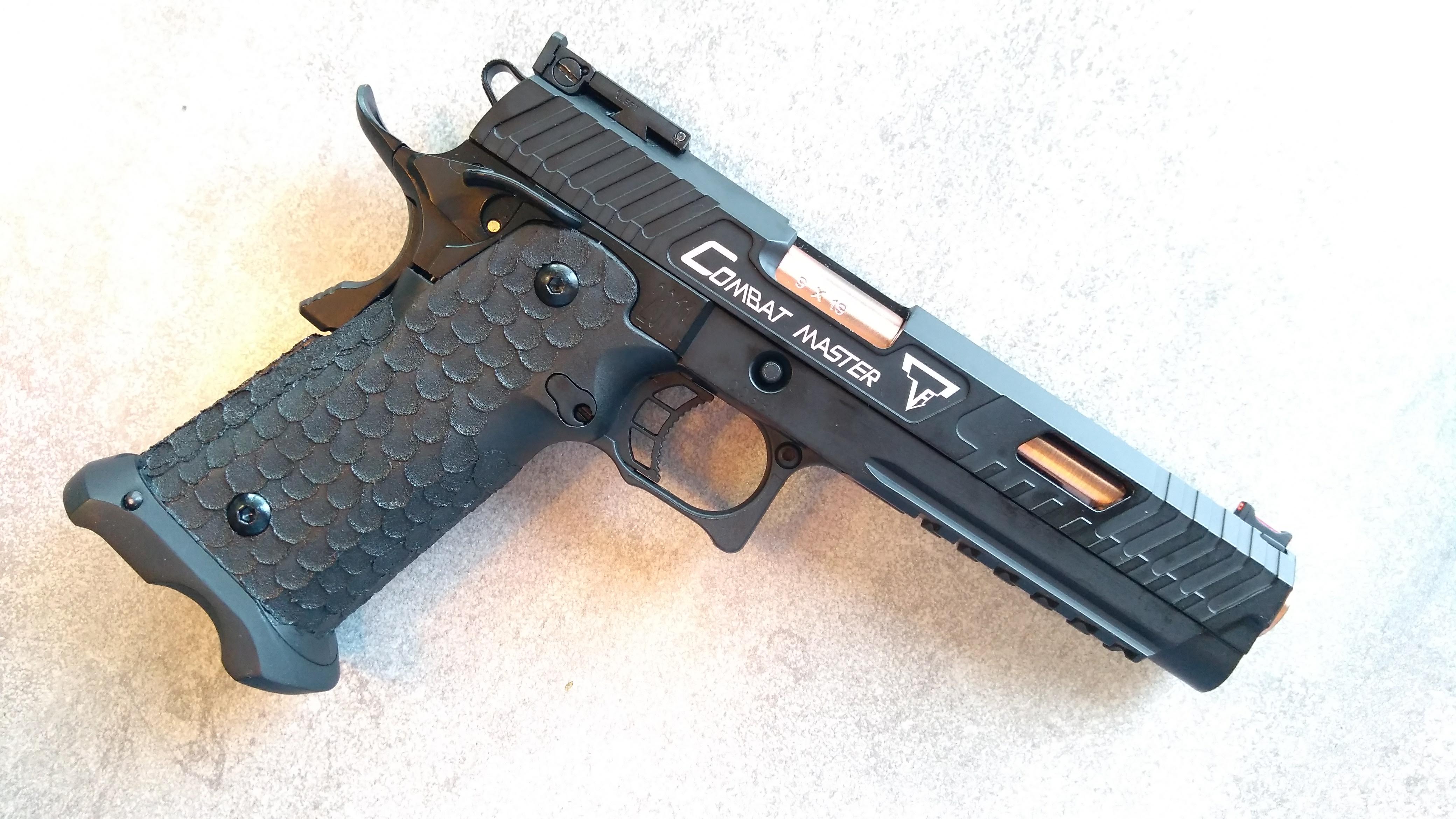
The R501 featured here is a compact gun, factory equipped with a muzzle climb compensator. It is a full metal design, with a metal frame and a slide.
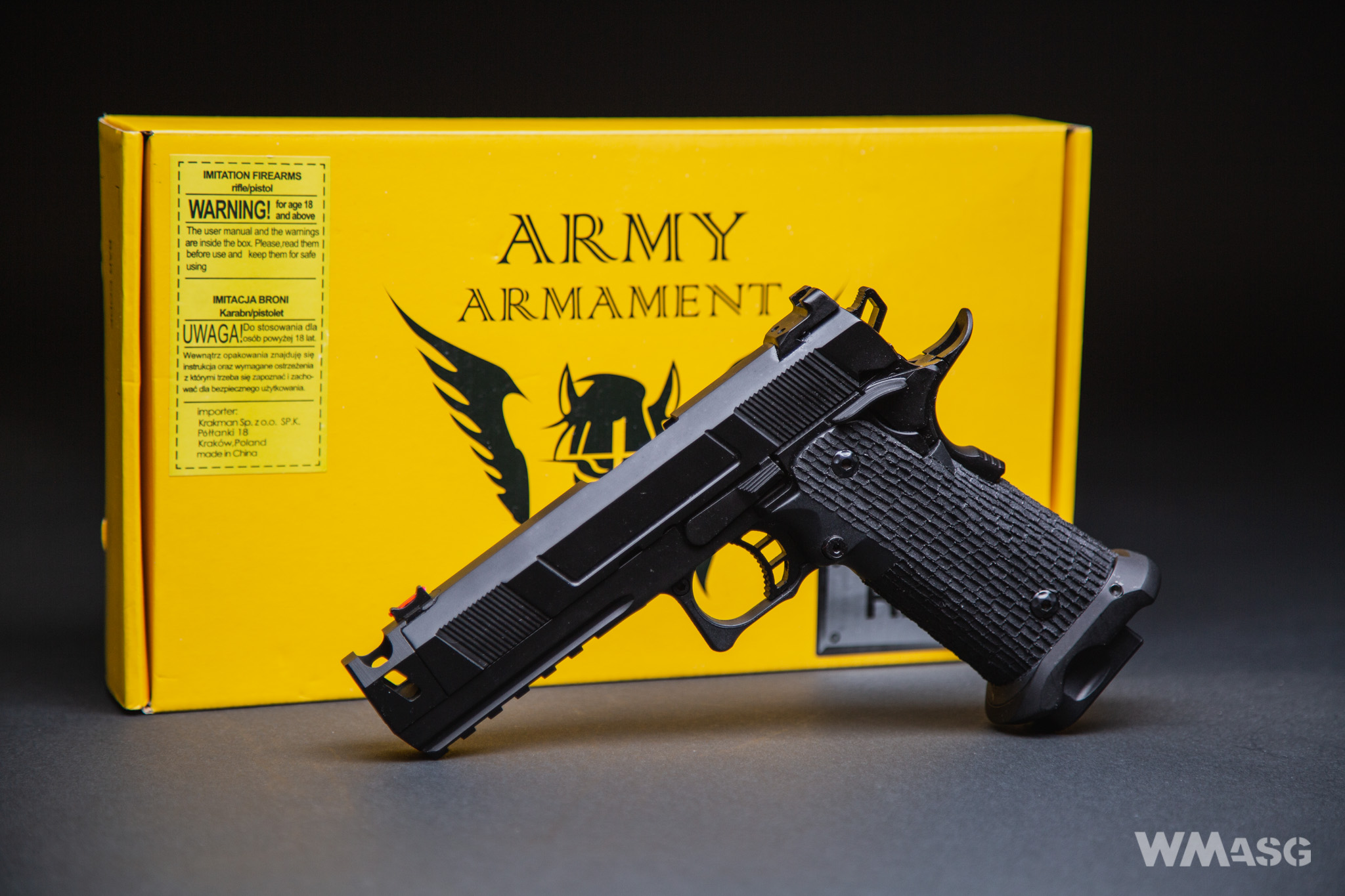
Basic technical parameters:
- overall length: 218 mm;
- weight: 1020 g;
- inner barrel length: 100 mm.
Magazine capacity is 28 BBs. According to the manufacturer's data, the gun generates a muzzle velocity of about 320 fps. Two versions are available: black and two-color with a tan grip.
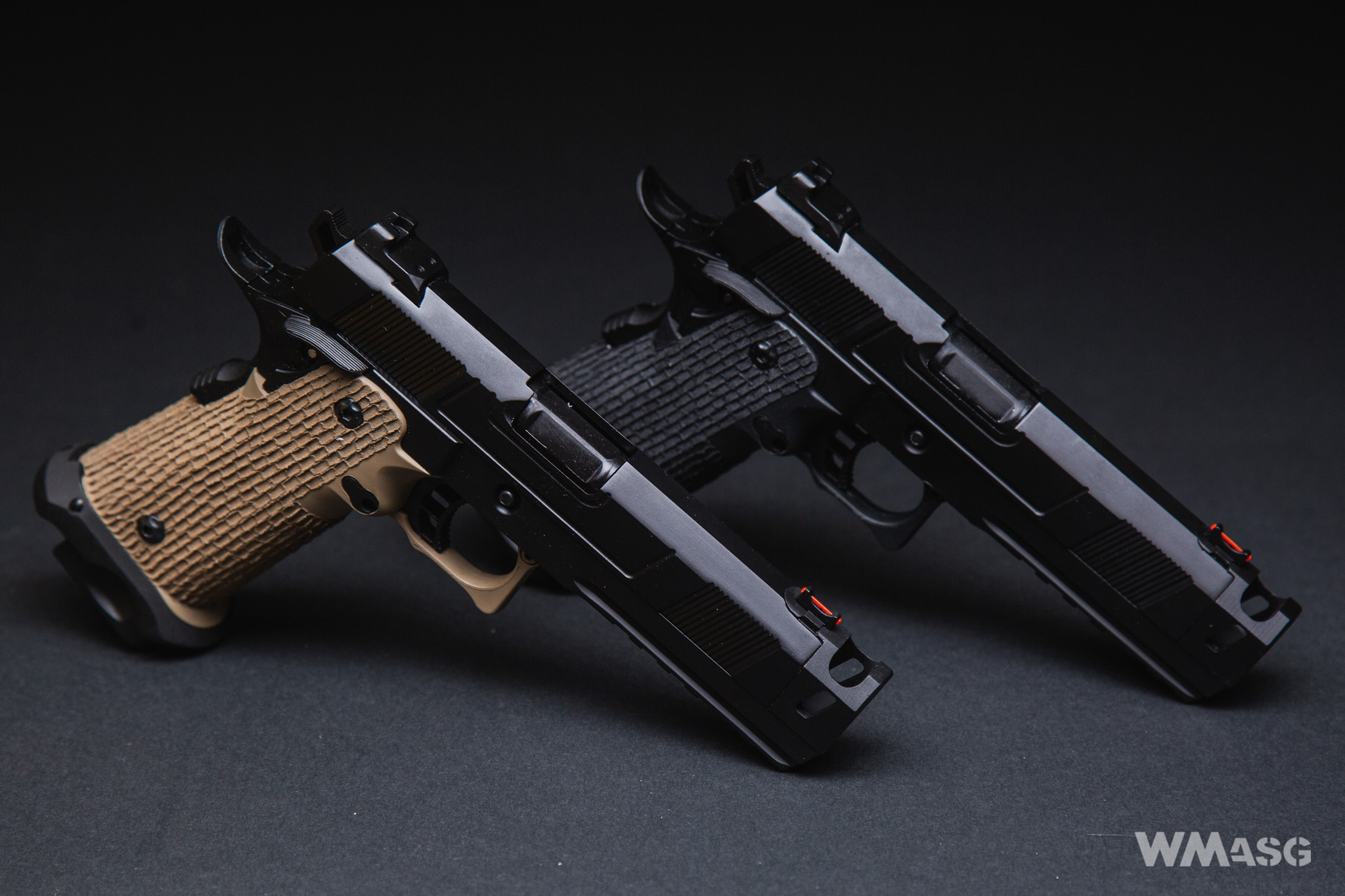
The replica is a variation on the Colt design so it fits in your hand like any Colt. You won't see anything new here. The situation is similar with the location and access to manipulators. Ergonomics are not as good here as in completely modern designs. But two things will undoubtedly get your attention when You will take the replica in your hands. First of all, thanks to the characteristic stippling, with which the grip's surface is finished, the gun literally "sticks" to the hand. We have not yet seen with a replica that could be held and aimed more confidently.
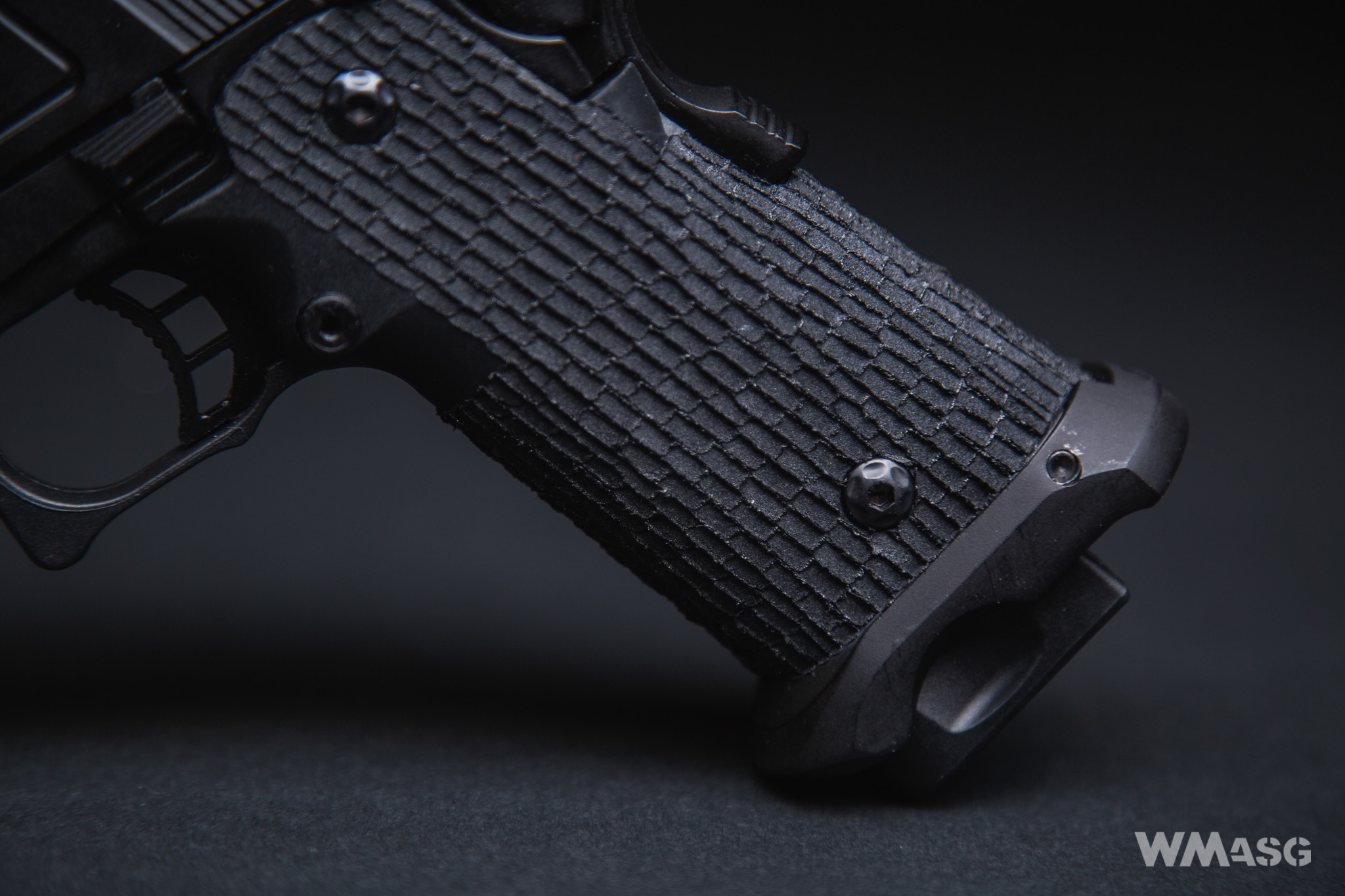
The second thing is fitting the slide. The vast majority of pistol replicas have a slight clearance between the slide and the frame. The effect is a distinct rattling of the slide. In the R501 there is no clearance between the slide and the frame. The slide fits perfectly.
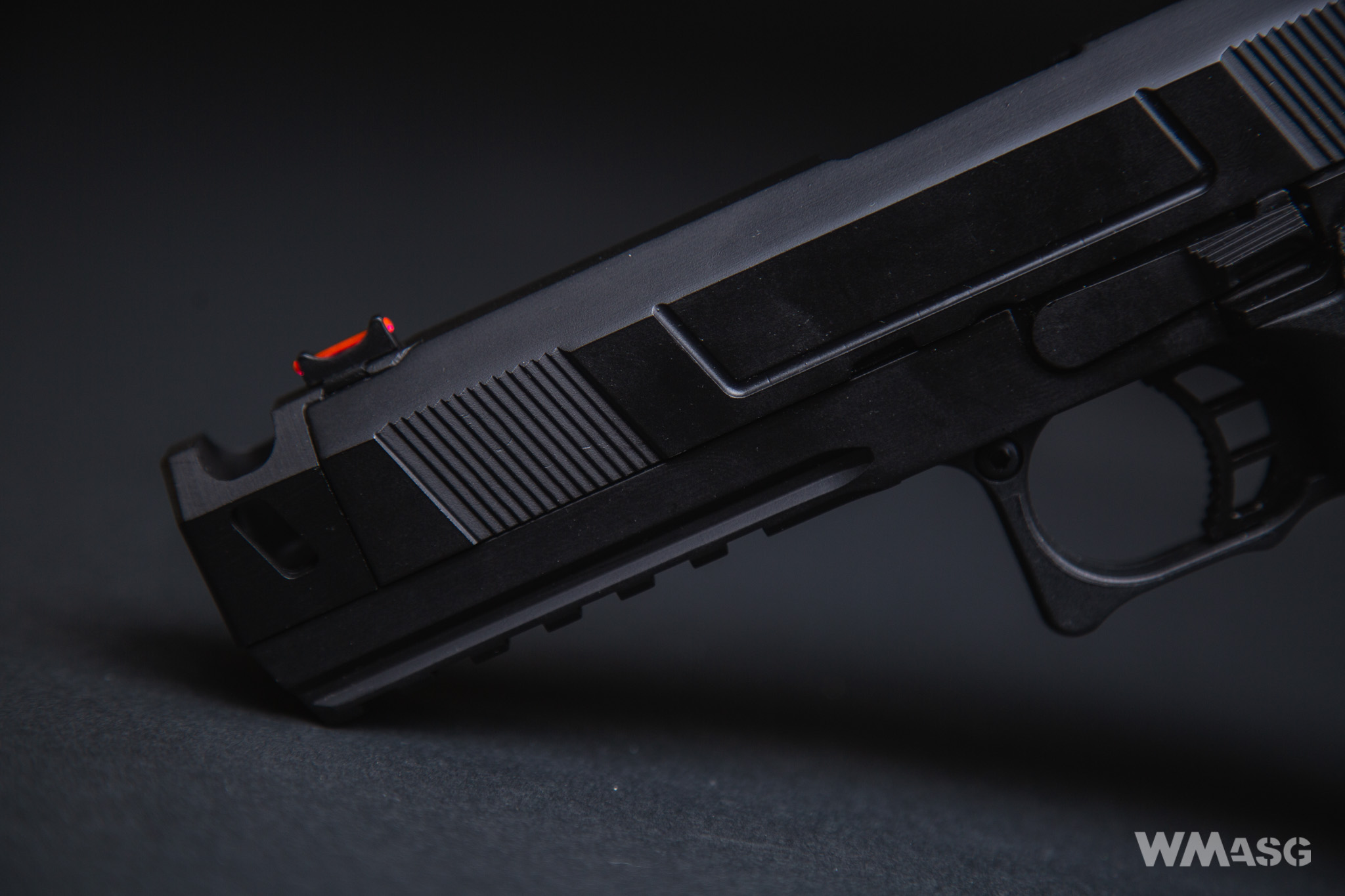
The manipulators mentioned earlier have the shape, functionality and arrangement typical of 1911 clones. Let's start with the safety. The basic safety switch is in the grip, a pressure lever at the back.
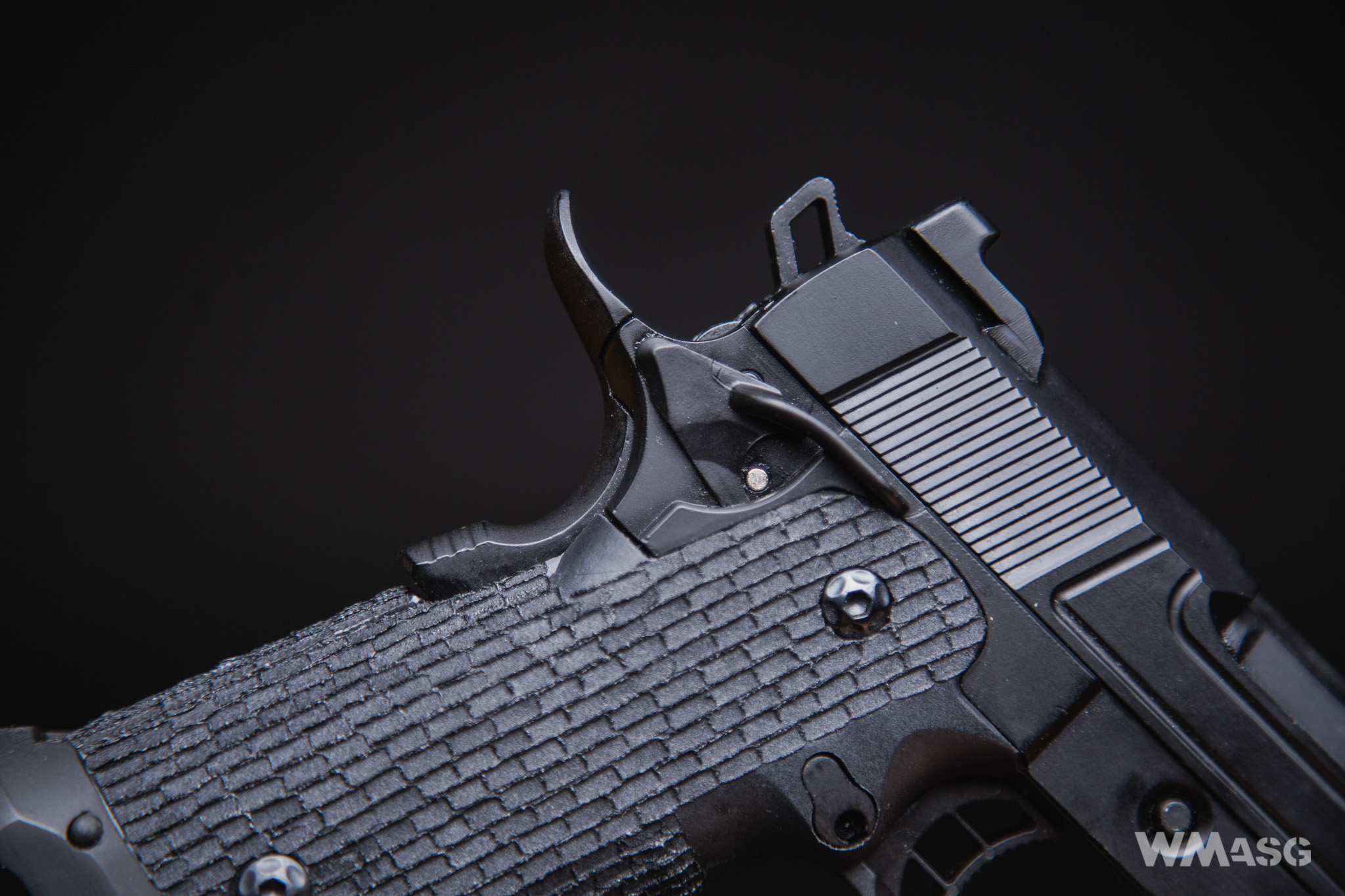
The role and principle of operation are simple - unless you properly hold the gun in your hand, the trigger remains stiff, firing is impossible. To be precise: in the replica the trigger is not rigidly locked, it is possible to pull the trigger by about 2 mm, the lock prevents pulling it further. The grip safety works regardless of whether the trigger mechanism is cocked (hammer pulled back) or not.
The second safety feature is a double-sided lever located just above the grip. The latches in the lower position visible in the photos mean the weapon is ready to fire. If it was secured, the latches would go into the notch marked on the slide. This safety works only when the hammer is pulled (the weapon is cocked). When the hammer is dropped, as in the photos, it is impossible to move the latch up.
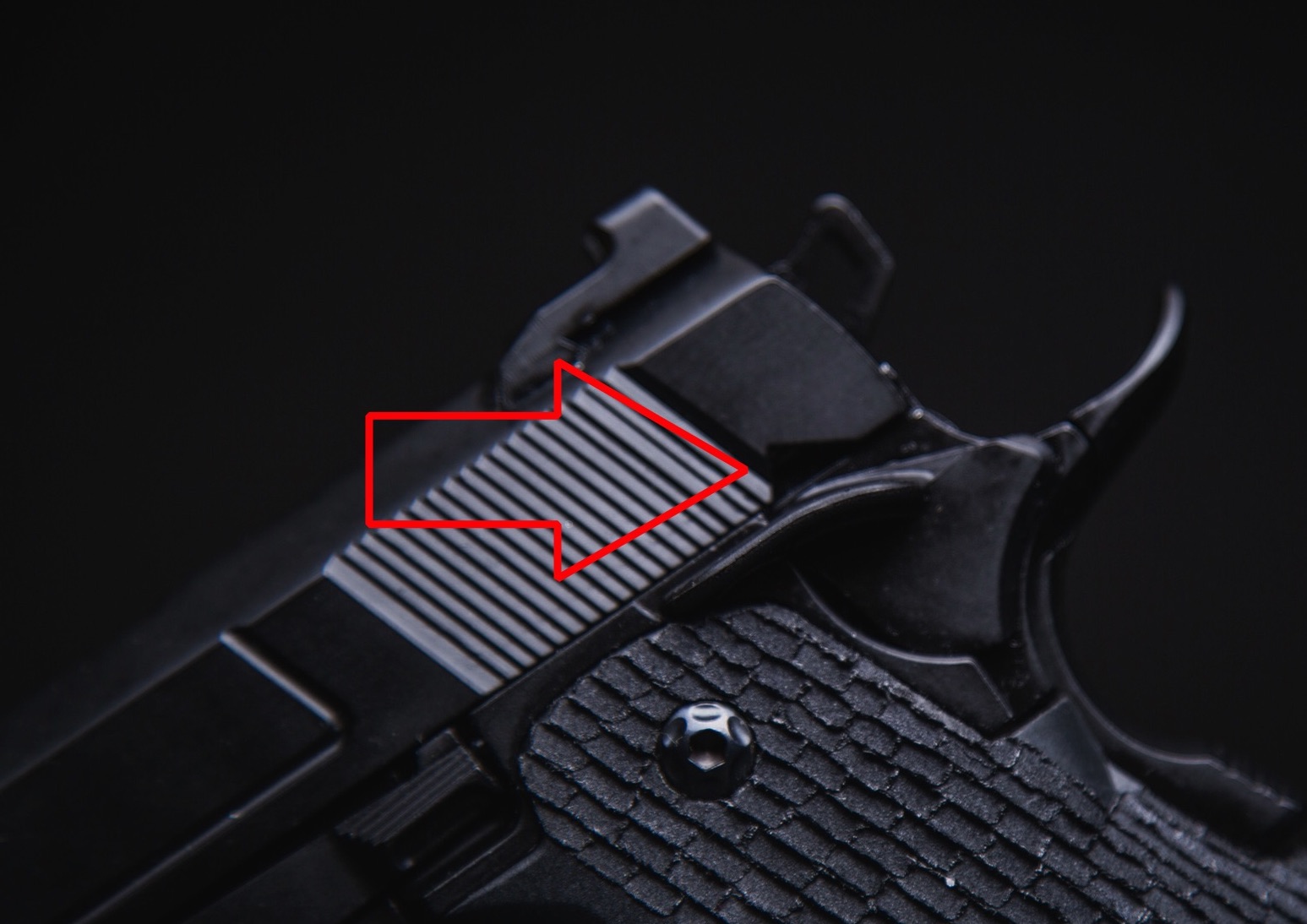
Here we would like to make an observation regarding the tested replicas. In theory, the right and left fuse latch move simultaneously. In the reviewed black replica, the right latch showed some "autonomy", that is, it could be lifted even when the hammer was not pulled back, but it did not block the trigger. The tan replica exhibit this behavior, so either there was some assembly error in the black version or, during tests, someone damaged the right latch's assembly by applying to much force.
Ending the topic dedicated to manipulators, the standard slide release button is placed in a typical place, so the thumb is simply too short and the release of the slide requires some skewing of the gun in ones hand. The magazine's round release button is easier to reach, but you still need to change the grip slightly.
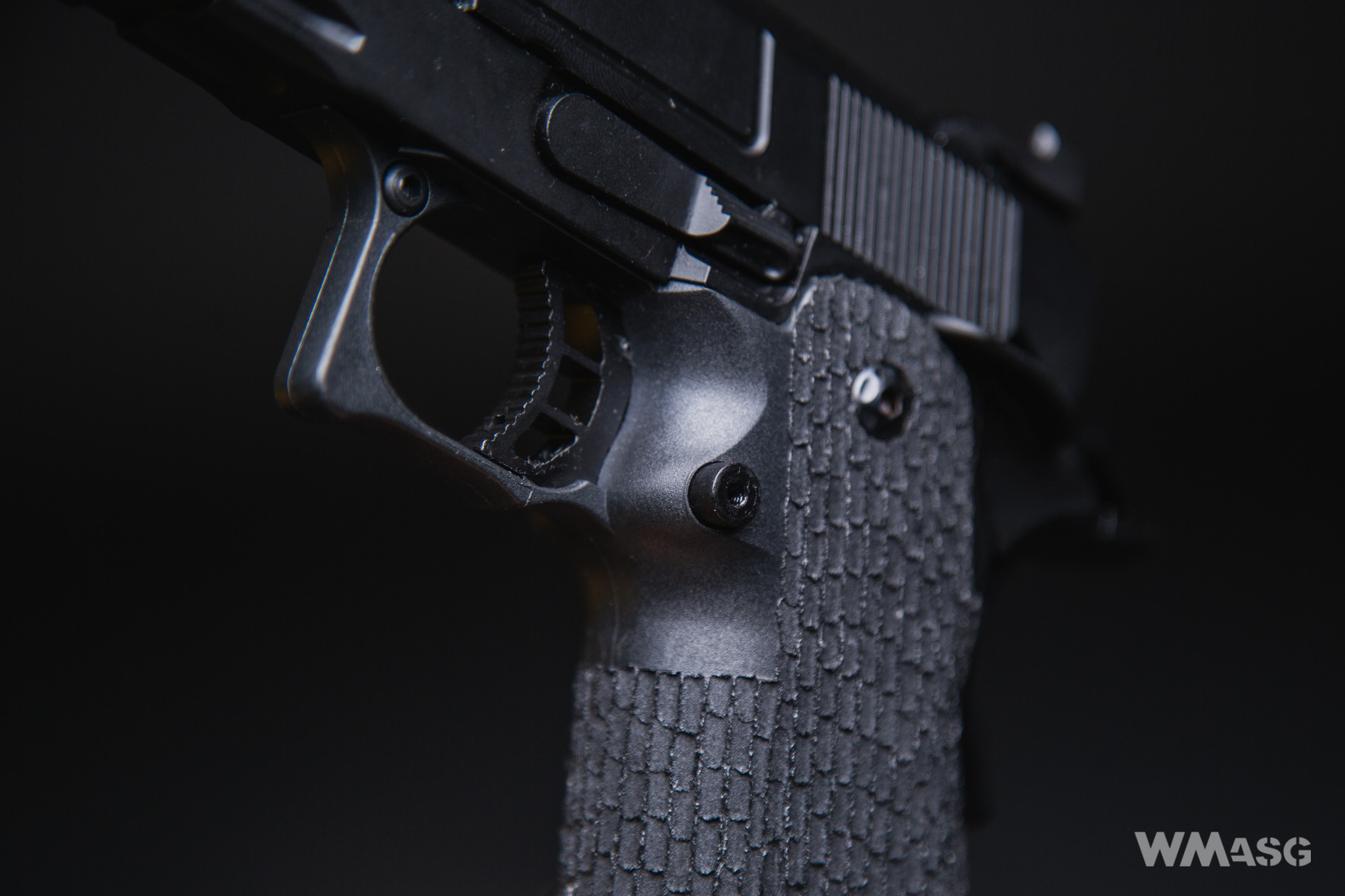
Both buttons are classically placed on the left side of the replica. They are not duplicated and cannot be moved to the other side. This is not a defect, but a feature of Colt derivatives. As we have already mentioned it: ergonomics anno domini 1911.
The gun has fixed sights. At the back there is a classic rear sight, at the front a "fiber optic" front sight, which in normal lighting conditions makes aiming easier. In low light it doesn't work as well as you'd expect, but it's clearly better than if it was made in the color of a slide.
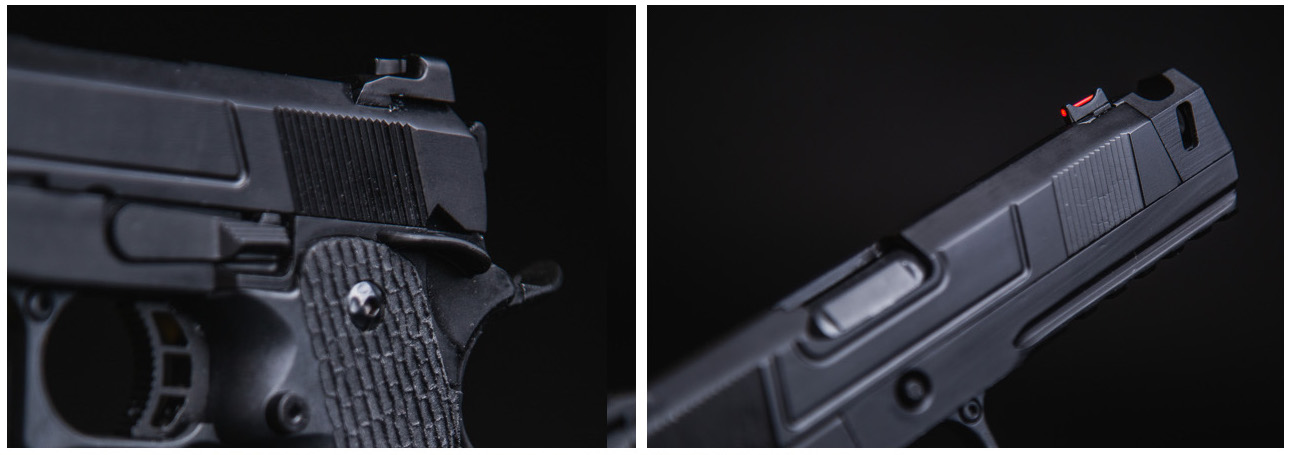
However, the basic and most important distinguishing feature of the R501 pistol is the compensator and the island barrel type barrel.
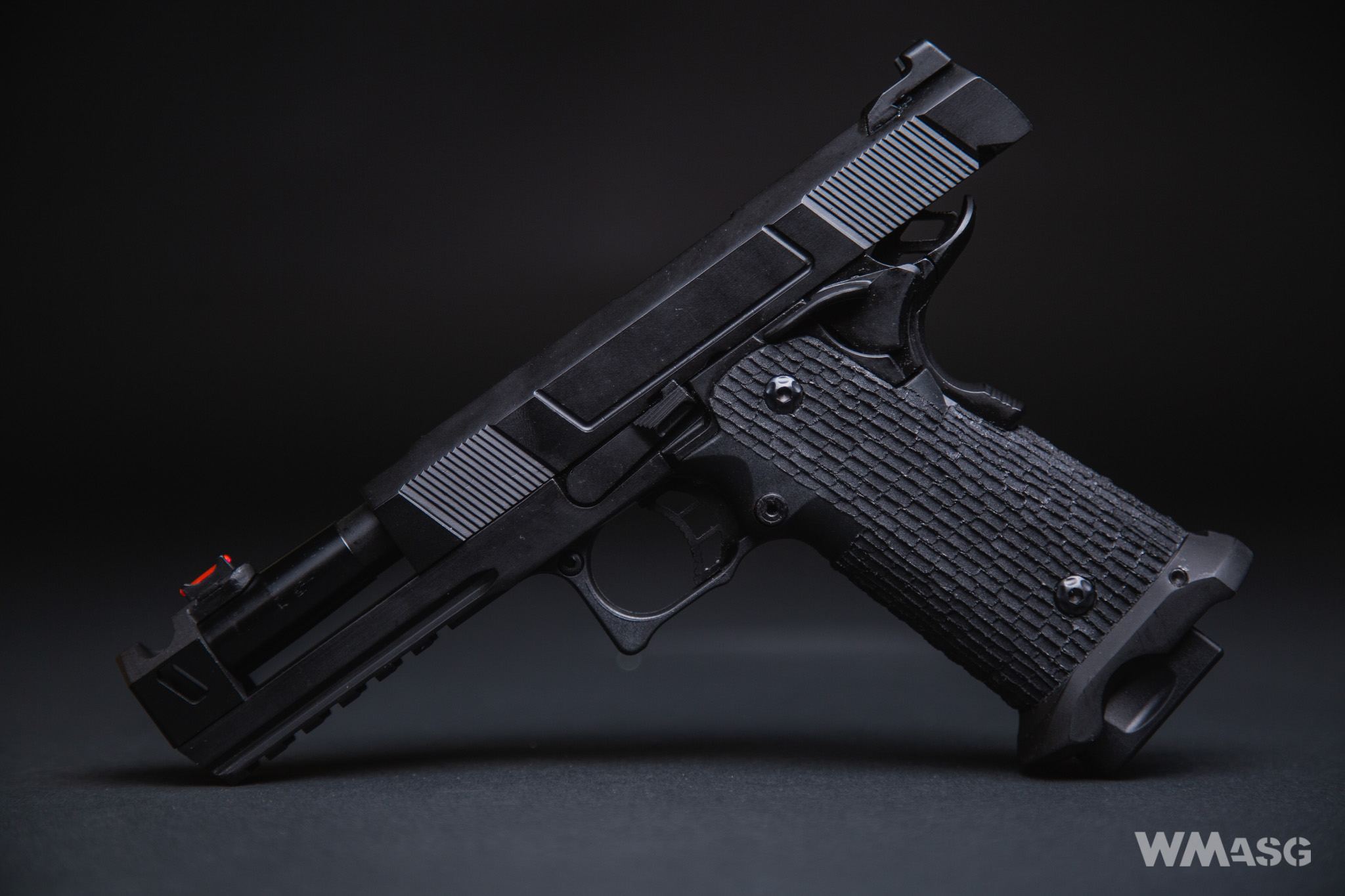
Of course, both of these parts in the replica do not give the user any measurable benefits. Nevertheless, they are there because the R501 is heavily modeled after the Costa Carry Comp pistol, and Chris Costa has been promoting the idea of using compensators for some time also in service weapons, not just sporting ones. The aforementioned Carry Comp is the first mass-produced service pistol with a compensator. Therefore, the R501 also has a compensator and looks pretty good with it.
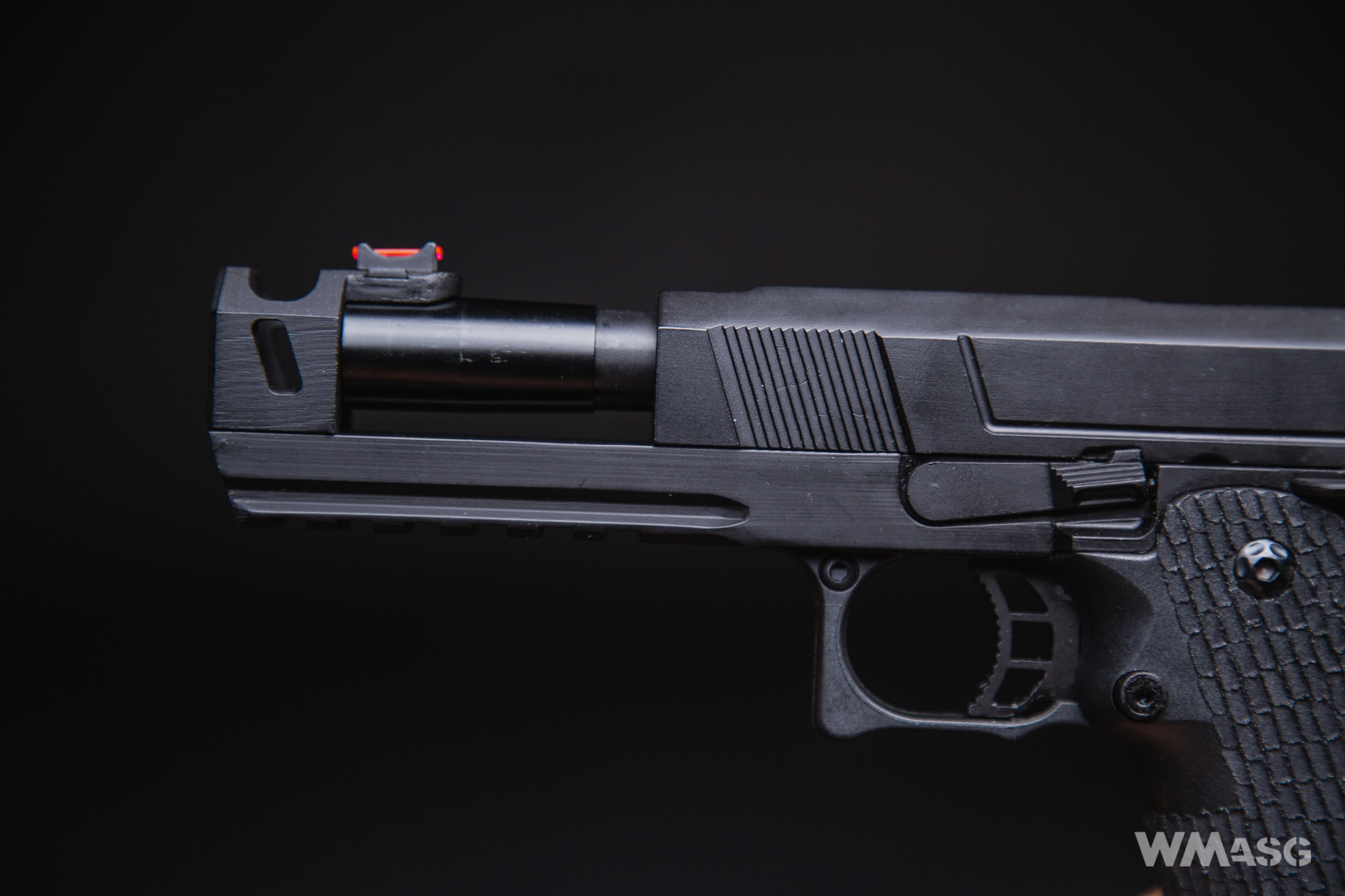
The last two external parts that should be noted are the under-barrel accessory rail, visible in the photos above, and the magwel at the bottom of the grip. We checked the rail functionality by mounting a flashlight on it, which you can see in the attached video. The characteristic undercuts of the magwell and the magazine floor plate, which role is to facilitate grip and speed up magazine change, also work.
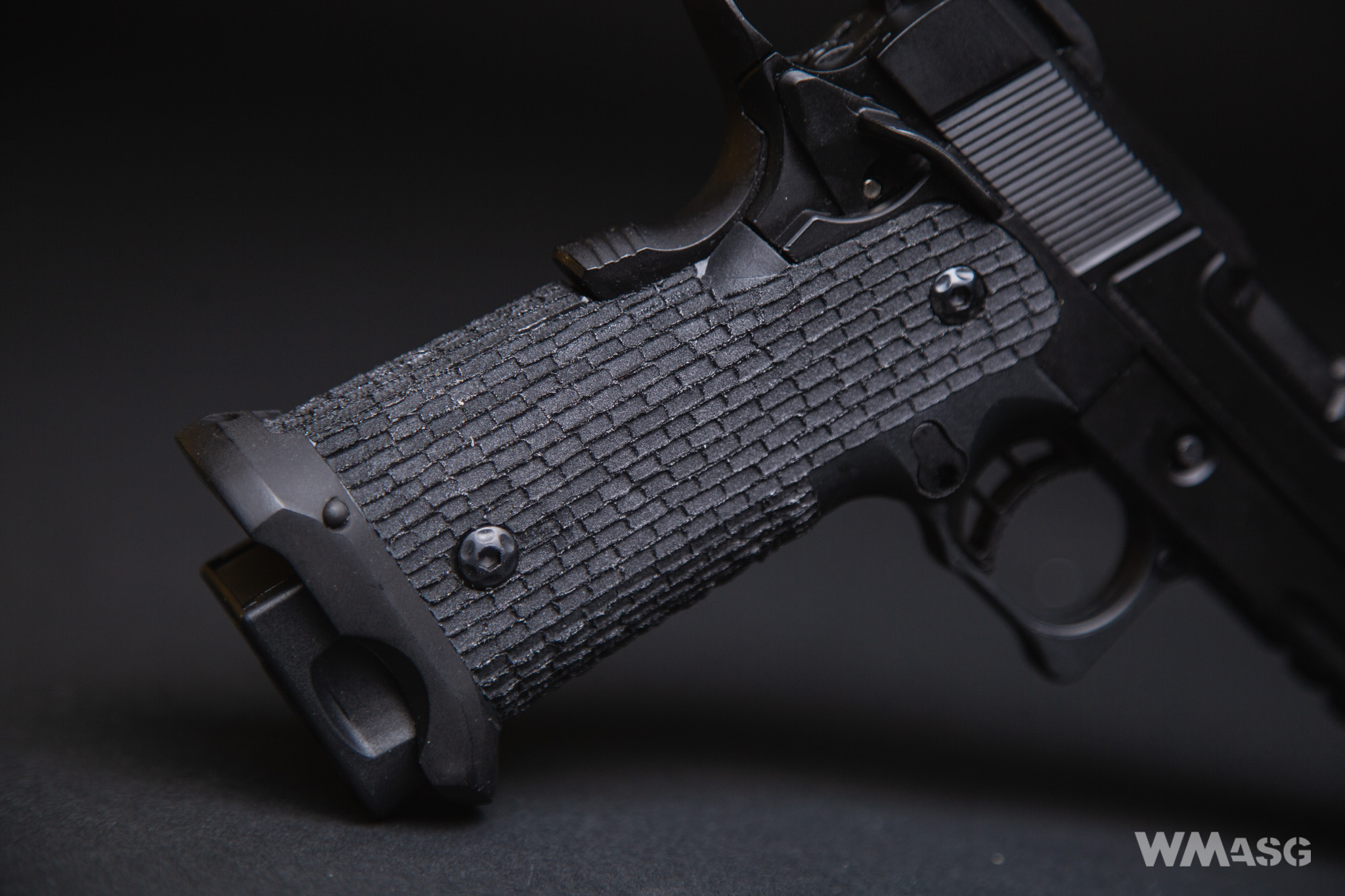
And since we are talking about the magazines ... The currently available ones are sold with magazines powered by Green Gas. These magazines are of a new design, equipped with new tighter valves, the quality of which cannot be assessed by a visual inspection.
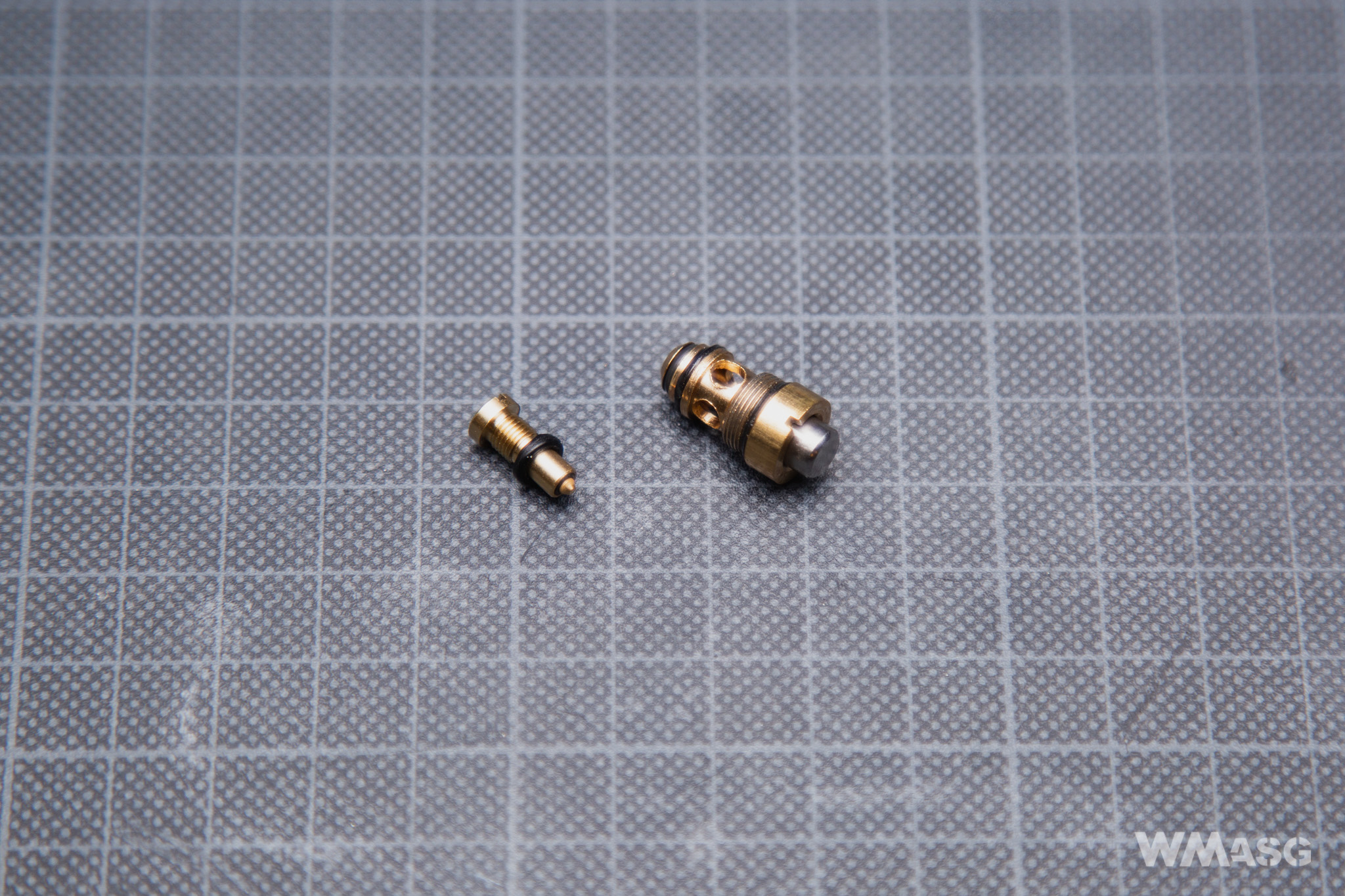
Knowing the opinions about the seal of older Army Armament gas magazines, we did a simple test. We immersed a gas-filled magazine in a transparent container with water. And nothing happened. No gas bubbles escaped from the magazine, which indicates the seal of the new type of valves and the magazine housing itself is good. The immersion lasted for 10 minutes. We conducted the test twice on both magazines that we had at our disposal. After the first test, the magazines were dried and loaded with BBs. After all the gas had been used, they were refilled and re-immersed in water for another 10 minutes. The result was the same. After another drying session, we loaded the BBs and emptied the magazines. We did not notice any difference in the operation of the pistols after submerging two magazines twice. For better visibility, the tests were carried out with the floor plate completely disassembled, which task is to protect the lower magazine's valve.
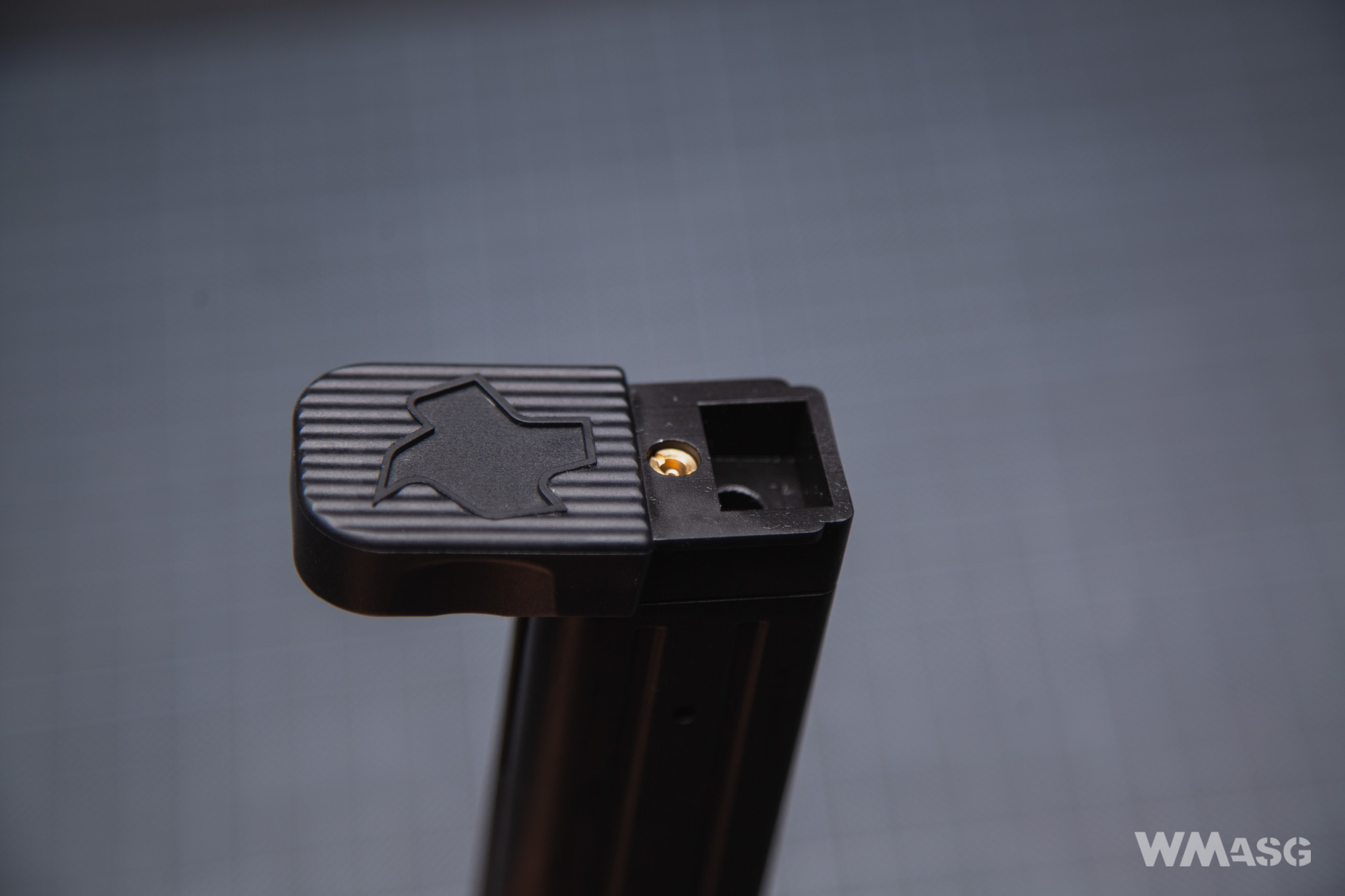
The second magazine test was a compatibility test. We used the R501 magazines interchangeably in a Tokyo Marui Hi-Capa 5.1 pistol and the Marui magazine in the Army pistol. Compatibility is maintained in both directions, with Army valves dispensing a larger portion of gas as the muzzle velocity of both guns using these magazines is slightly higher.
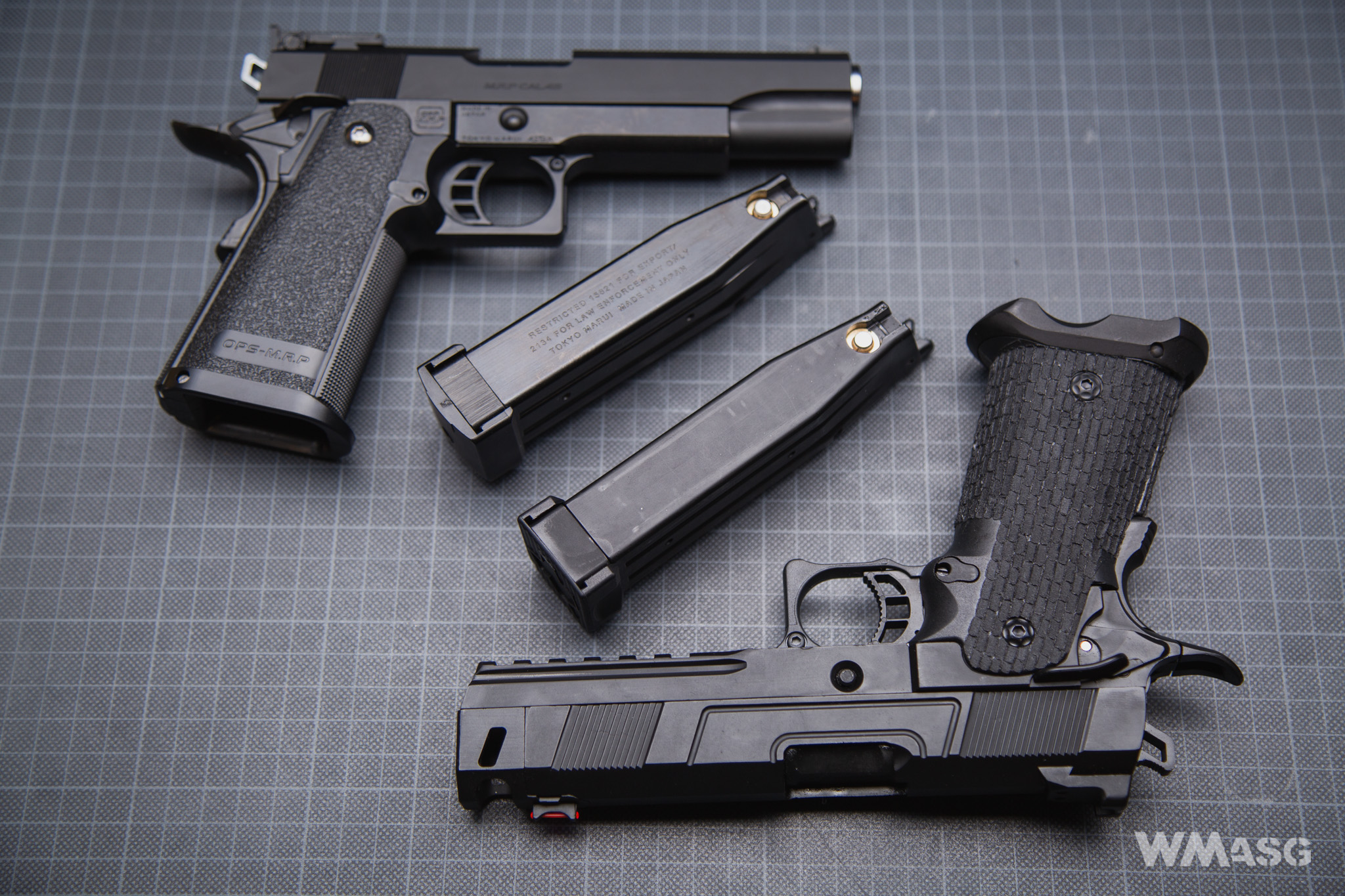
This information may be useful, but rather for owners of Marui replicas as Army Armament magazines cost about 16 EUR. Below are the Army and Tokyo Marui magazines. The Army one is on the right.
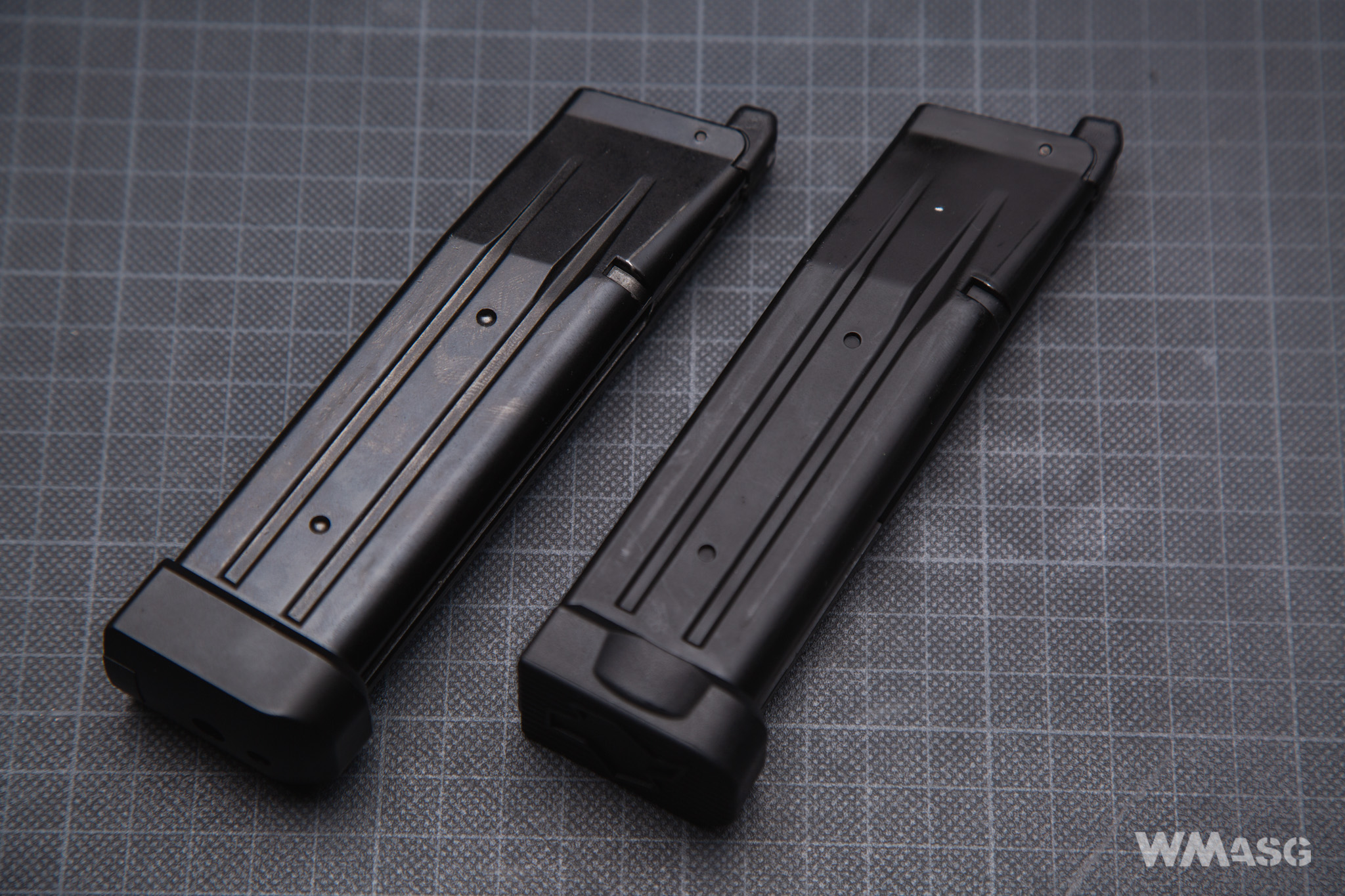
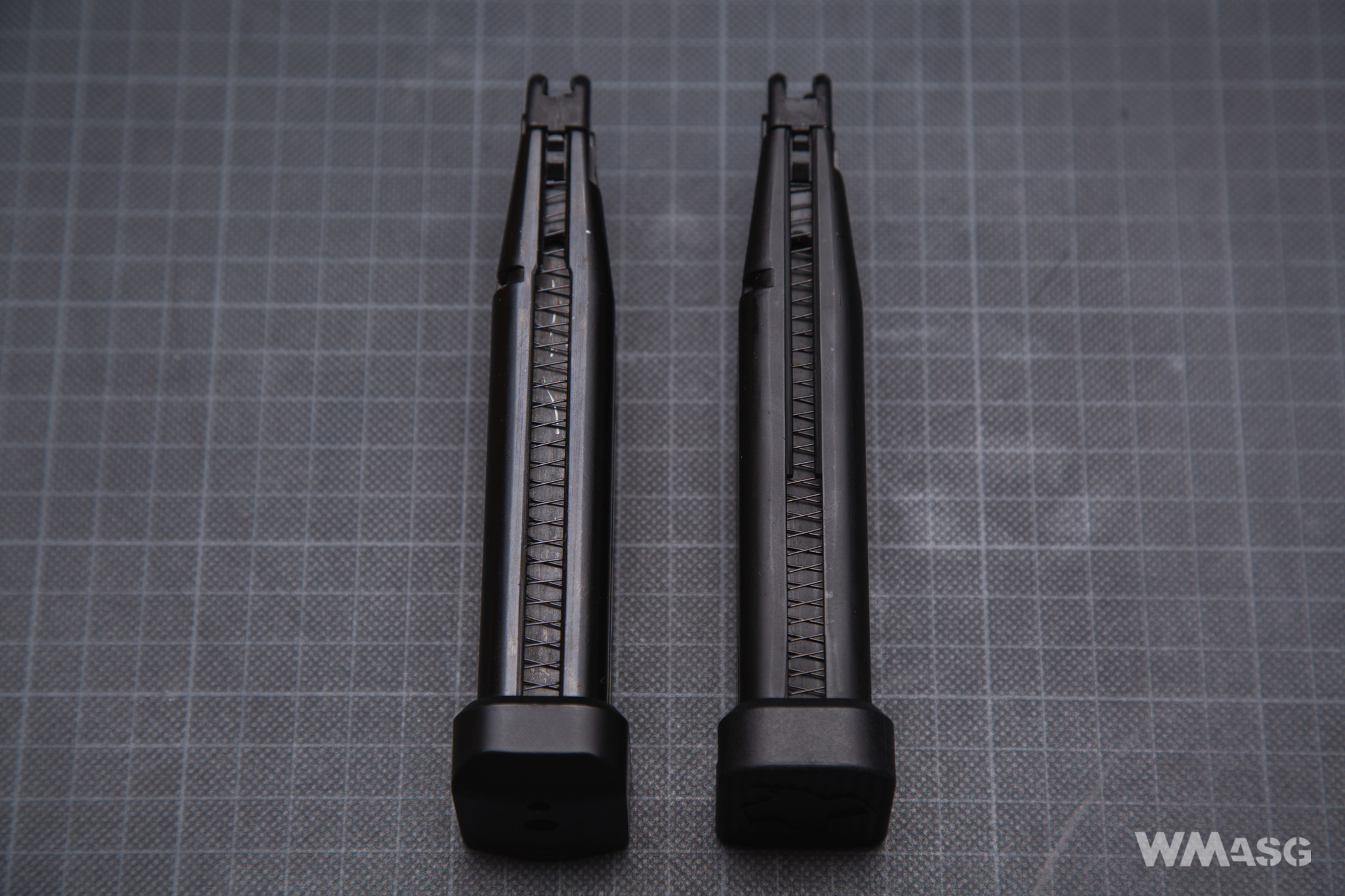
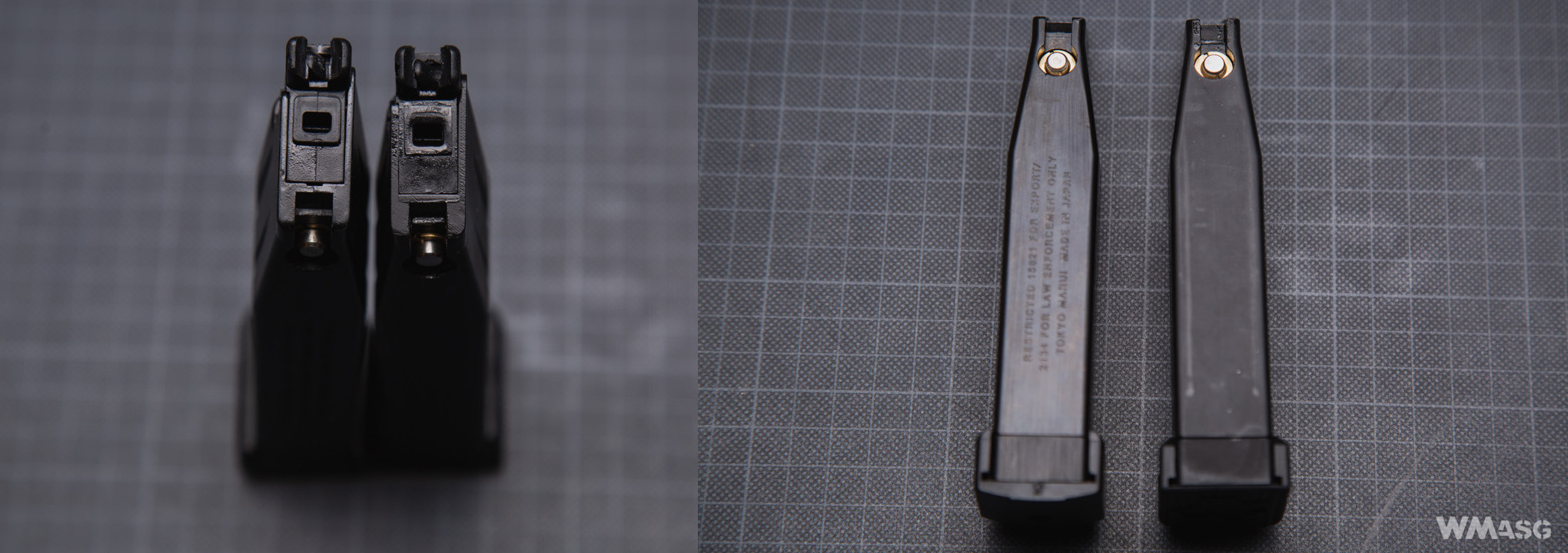

Summary of the results of muzzle velocity measurements on both magazines is on the second page of this text.
More on the magazines: the replica is delivered with a Green Gas powered magazine. The manufacturer, however, ensures that the parts of the replica's gas system are designed to be powered by CO2 magazines. We have not carried out such tests because CO2 magazines for R501 are currently not available in Army Armament's offer. But, as we have learned, they are in preparation.
Shooting
During shooting, we noticed several other features of the replica. The first thing is a really strong blowback. Of course, incomparable with the behavior of a real gun, but its still really strong. We also paid attention to the travel distance of the slide. In some replicas, manufacturers, wanting to improving accuracy, reduce the travel distance of the slide to an absurd minimum. In the R501 the slide performs a full long stroke. You will be able to see it in the video.
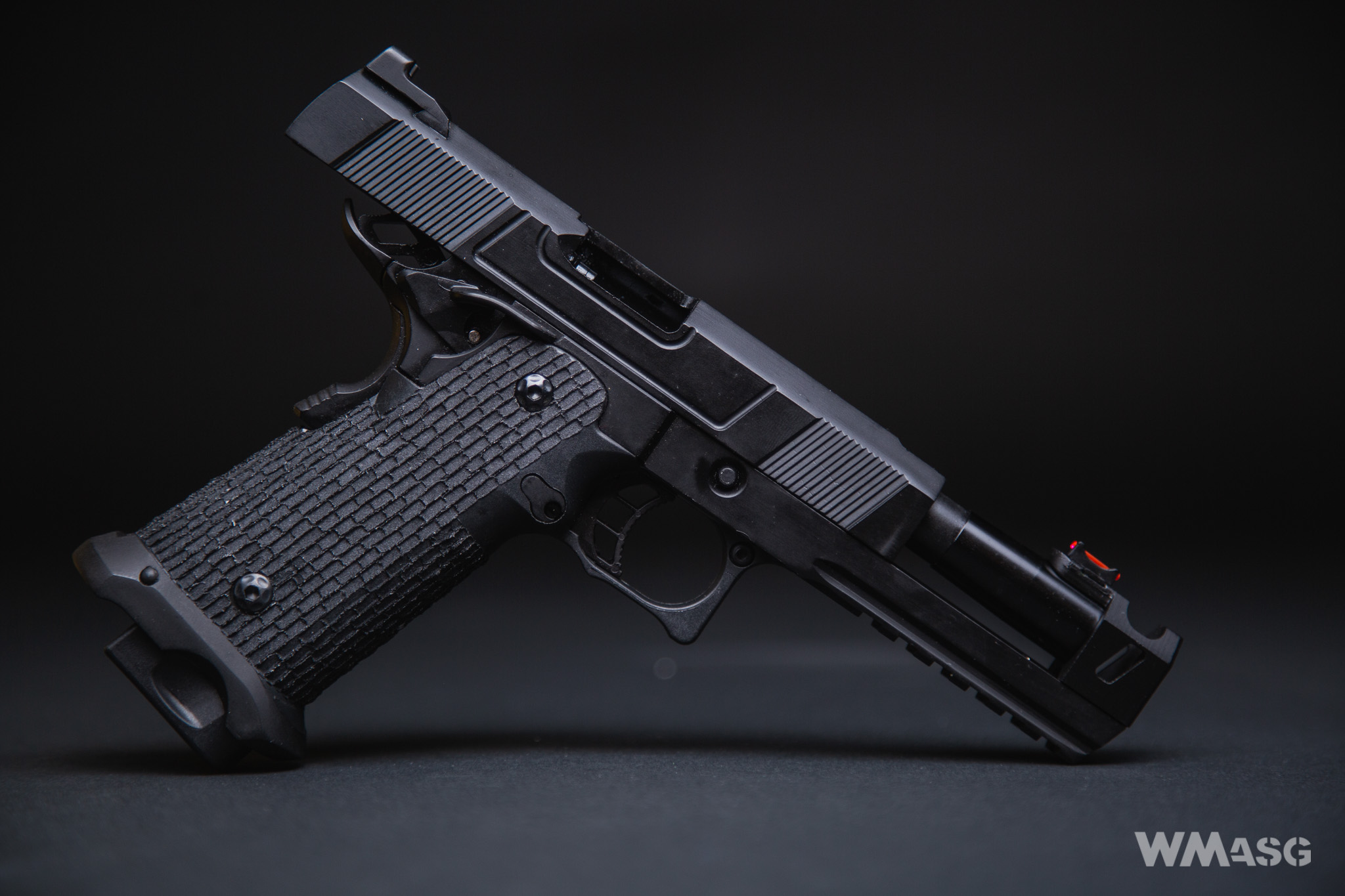
As we already mentioned, the guns were also tested in poor lighting conditions. The flashlight was successfully mounted without any problems. The "fiber optic" feont sight fared a bit worse as it seemed a bit to dim to us. But these are subjective impressions.
The replica's shooting range test went well. The HopUp adjustment is quite precise and keeps the settings. The problem is, of course, the need to remove the slide, but this is the case with a vast majority of replicas. The slide is pulled off in a typical way: in a replica without a magazine inserted, pull the slide back (but not completely, only the distance to the first notch), remove the blockade, then push the slide forward, towards the barrel front.
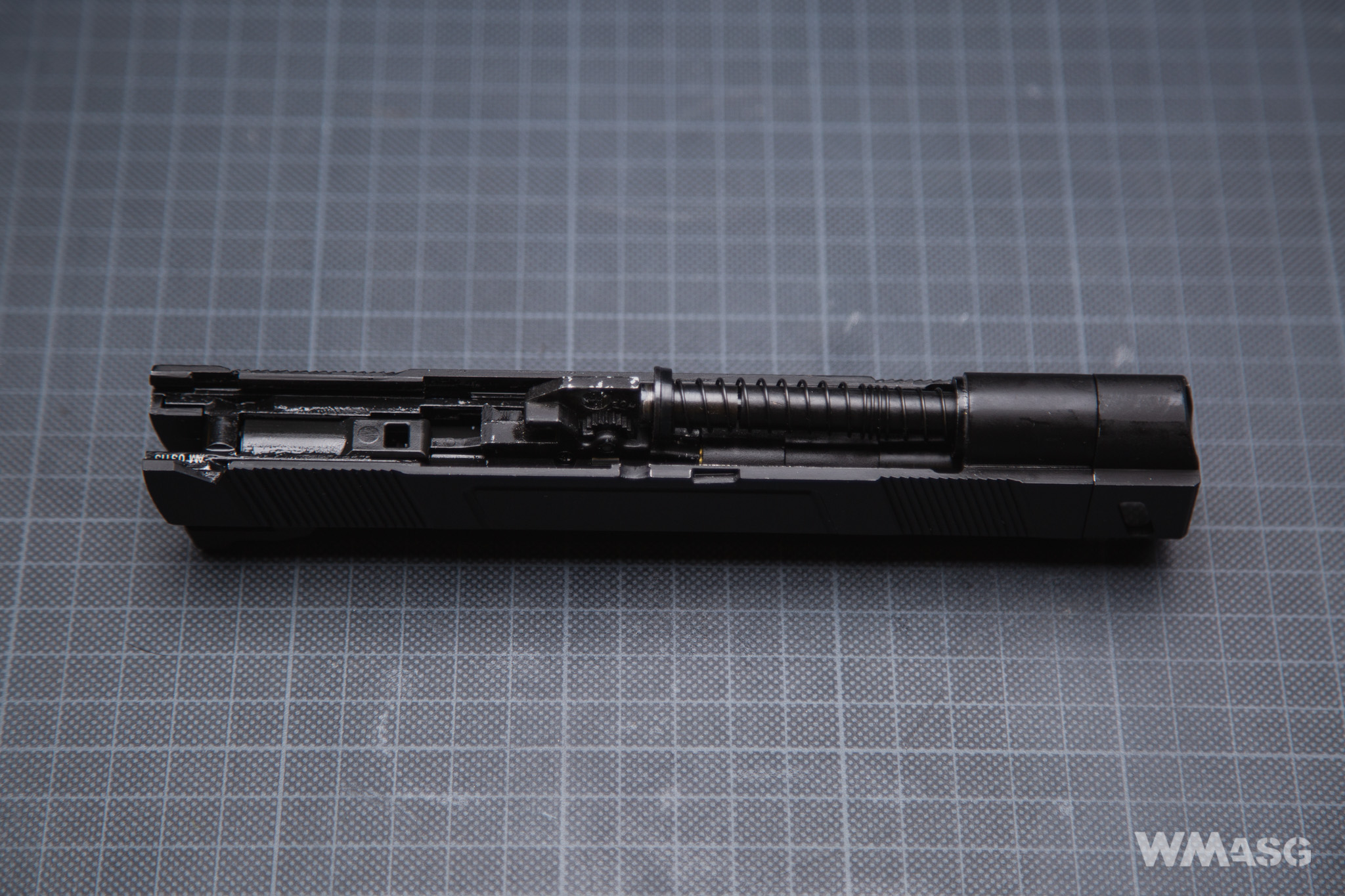
The adjustment is done with the knob on the left. Counterclockwise rotation - more HU.
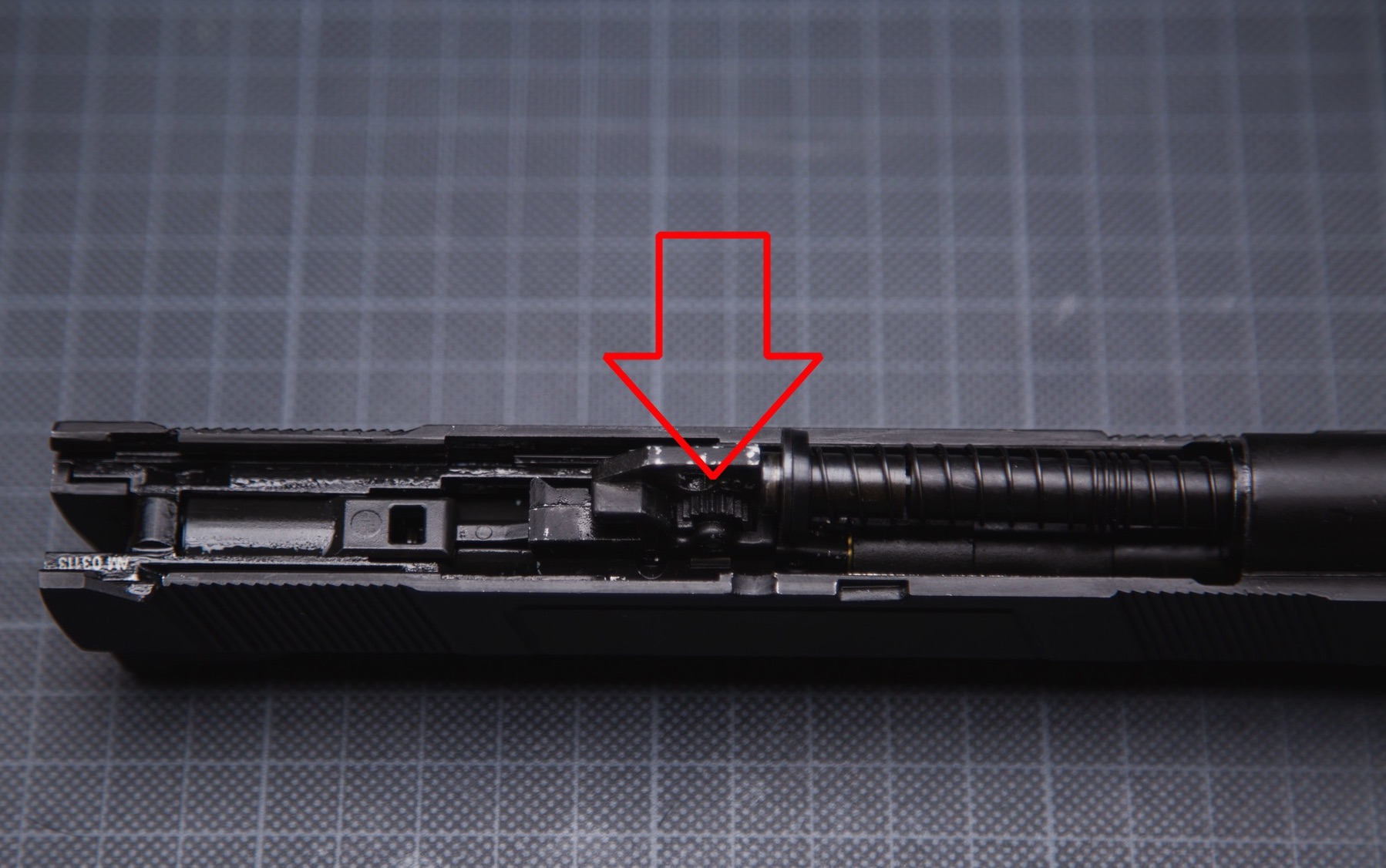
Target shooting test and muzzle velocity test
Using ProTech gas, the muzzle velocity measured with OpenBlaster 0.2g BBs and HU set to zero was at an average of 320.9 fps, i.e. according to the manufacturer's declarations. Using 0.25g BBs and the same gas, the maximum range of the replica was less than 30 meters. We shot the targets from a distance of 12 meters. The shooting range was enclosed (no wind), the temperature was around 10°C. We shoot from a standing stance, weapon was held with both hands, without any support. After adjusting the Hop-Up, 10 more test shots were placed within a circle 7 cm in diameter.
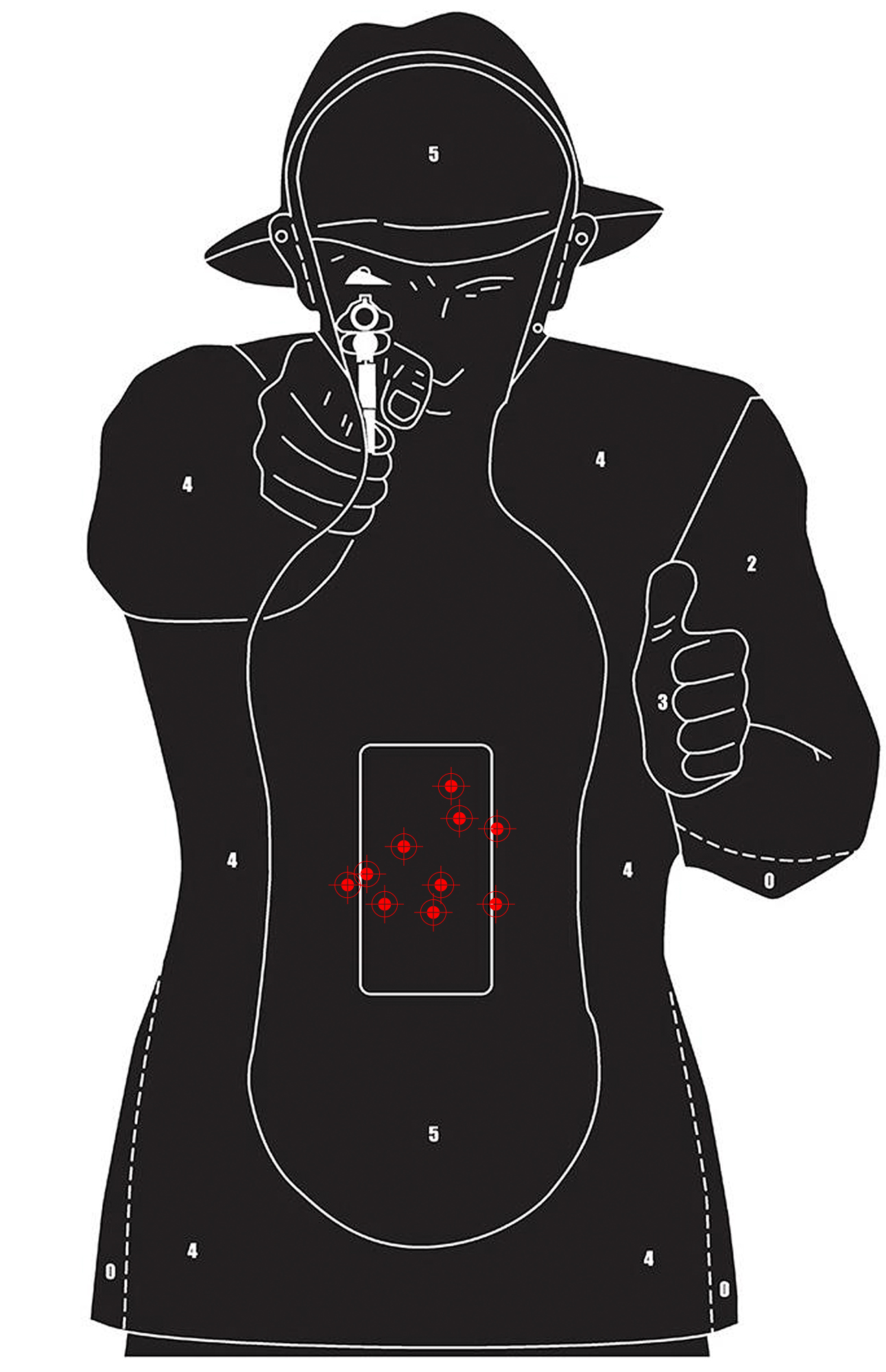
From one filling of the magazine with gas, it was possible to repeatedly shoot about 40 BBs. We also conducted a muzzle velocity test using the TOP GAS 12KG gas. As expected, the results were clearly higher. The average muzzle velocity on this propellant was 350 fps.
Summary
Considering our own experience with many gas replicas of different manufacturers, we must say that the new Army Armament replicas are surprisingly good. Careful replication, good quality of parts, assembly and operation (not a single valve freeze happened during the tests). In our opinion, everything is made very well. Far from what we have dealt with so far. In addition, the price is very attractive. The regular price of the R501 replica is 83 EUR. The durability of the replica is the only mystery remaining. We were unable to check this during our several days of testing.
The video presentation of the Army Armament R501 pistol:
More photos are in the attached gallery.
The next page presents the results of muzzle velocity measurements.

